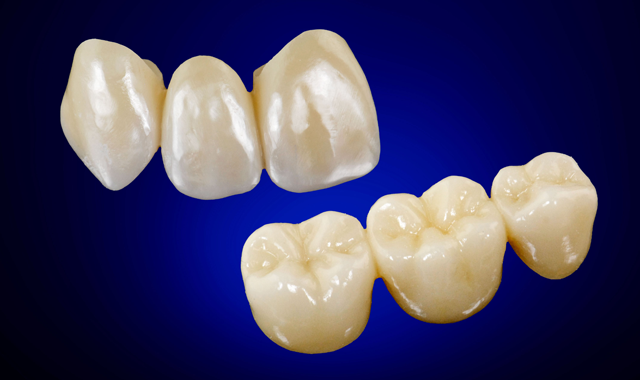Anterior esthetics with posterior strength: Is it possible?
Zirconia is often left sacrificing esthetics for strength, but what if both could be achieved?

Throughout the evolution of zirconia, the ultimate end-game has been to achieve life-like esthetics in a material that features posterior strength.
When zirconia was introduced to the dental industry, it was originally referred to as “ceramic steel.” That was a fairly accurate name because, compared to feldspathic porcelains (which offered a 70–110 MPa flexural strength) and pressed ceramics (which were in the 400 MPa range), this new material was generally over 1,000 MPa - 10 times that of conventional porcelains!
Related article: 8 dental implant tips you need to know
The strength of the new material appealed to dentists and laboratories who sometimes found themselves repairing or remaking broken restorations due to their use in contraindicated applications, like long-span posterior bridges. What didn’t appeal to the same users was its lack of attractive and natural esthetics, since all of the original zirconias were just slightly less opaque than the alloys used in substructures.
The next generation of zirconias, often called anterior zirconia, were much more translucent than those preceding them, but that came at a cost. They were approximately half the strength - 600MPa on average. Though many were satisfied with the high translucency, there was a problem with the value. Crowns and bridges made out of them sometimes had a greyish influence to the hue. This was due to the light refractive qualities of the zirconia.

So, deciding on a particular type of zirconia has always been an either/or choice that was frustrating and clinically limiting. Today, that choice is no longer necessary. The challenge has been met head on and the result is the newest generation of Whip Mix zirconia called Vericore ZR Pro.
Described as exhibiting a desirable level of greyness (value) and a more natural, vital appearance, Vericore ZR Pro goes even further. Whip Mix’s top-of-the-line zirconia material is also very strong. The flexural strength of this new, versatile product is approximately that of most of the original, posterior zirconias. Samples yielded values of over 1,140 MPa.
The application of zirconia at that strength level is barely limited in application. From single anterior or posterior crowns to multi-unit bridgework, you will be able to feel comfortable with this material anywhere in the mouth due to its high flexural strength (twice that of anterior zirconia). This strength enables labs to produce posterior bridges over three units and feel comfortable doing it.
Related article: 6 materials lab techs need to know about
Its vital-looking esthetics make it ideal for use as a substructure or monolithic restoration that can be cemented in both the anterior and posterior parts of the mouth. The Vericore ZR Pro zirconia is available in white and in pre-shaded discs in popular Vita® shades including: A1, A2, A3, B1, B22 and Bleach. The discs are 98mm in diameter, so they are compatible with most mills and come in 10mm, 12mm, 14mm, 16mm, 20mm and 25mm thicknesses.
The evolution of dental restorative materials will continue. This isn’t the last iteration of zirconia. New developments happen every day as researchers try to create the perfect restorative for the dental patient. As the digital revolution moves on, so do the materials that will drive it.